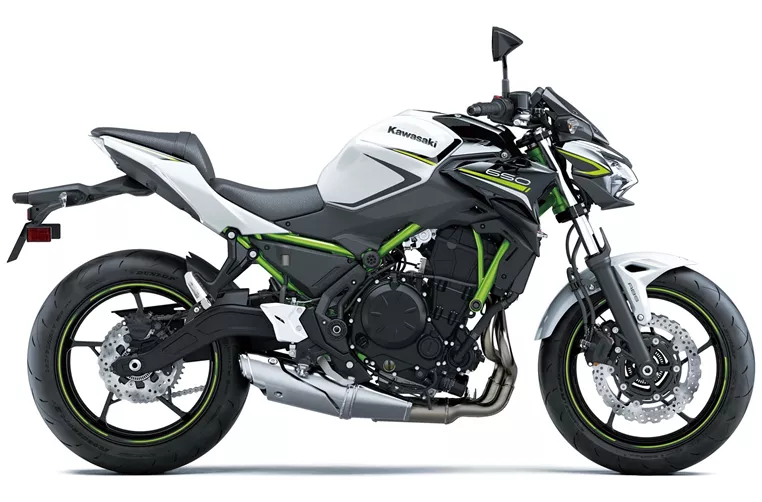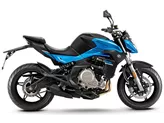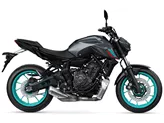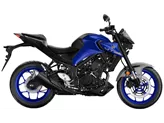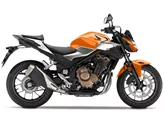Yamaha MT-07 2014 vs. Kawasaki Z650 2020

Yamaha MT-07 2014
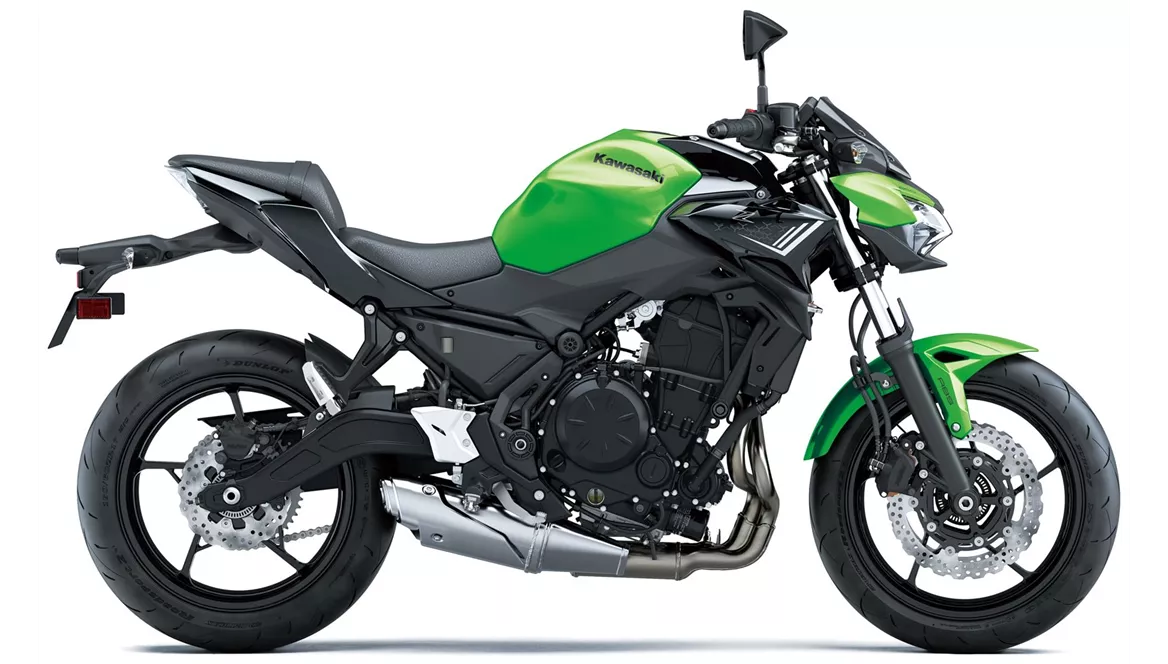
Kawasaki Z650 2020
Overview - Yamaha MT-07 2014 vs Kawasaki Z650 2020
When comparing the Yamaha MT-07 2014 and the Kawasaki Z650 2020, it is important to consider their technical specifications and strengths and weaknesses.
In terms of engine and drive train, both bikes have an in-line engine with two cylinders and liquid cooling. The Yamaha MT-07 2014 has a slightly higher engine power of 75 HP compared to the Kawasaki Z650 2020's 68.2 HP. However, the torque of the Yamaha is 68 Nm, while the Kawasaki has a torque of 65.7 Nm. The Yamaha has a displacement of 689 ccm, whereas the Kawasaki has a displacement of 649 ccm.
Both bikes have a telescopic fork front suspension and a steel frame chassis. They also feature double disk front brakes. The front tire width is the same for both models at 120 mm, and the front tire diameter is 17 inches. However, the Yamaha has a wider rear tire at 180 mm, while the Kawasaki has a rear tire width of 160 mm. The rear tire diameter is the same for both at 17 inches.

Yamaha MT-07 2014
In terms of dimensions and weights, the Yamaha MT-07 2014 has a wheelbase of 1400 mm, while the Kawasaki Z650 2020 has a slightly longer wheelbase of 1410 mm. The seat height of the Yamaha is 805 mm, whereas the Kawasaki has a lower seat height of 790 mm. The kerb weight of the Yamaha is 179 kg, or 182 kg with ABS, while the Kawasaki has a slightly higher kerb weight of 185 kg, or 187.1 kg with ABS. The fuel tank capacity of the Yamaha is 14 liters, while the Kawasaki has a slightly larger fuel tank capacity of 15 liters.
Now, let's look at the strengths and weaknesses of each bike. The Yamaha MT-07 2014 is praised for its extremely agile engine and very light handling, making it a joy to ride. Its low weight contributes to its nimbleness on the road. The bike also has an aggressively angular appearance, which appeals to those looking for a more aggressive and sporty design. The powerful brakes provide excellent stopping power, and the comfortable seating position allows for long rides without discomfort. The throaty sound of the engine adds to the overall riding experience. Additionally, the extensive and easy-to-read display provides all the necessary information at a glance.
On the other hand, the Yamaha MT-07 2014 does have some weaknesses. The suspension is considered a little soft, which may not be ideal for riders looking for a stiffer and more responsive ride. The footrests tend to drag quickly, especially during aggressive cornering. Some parts of the bike are made of cheap plastic, which may affect the overall durability and quality. Lastly, the telescopic fork is considered boring by some riders, who prefer a more advanced and adjustable suspension system.
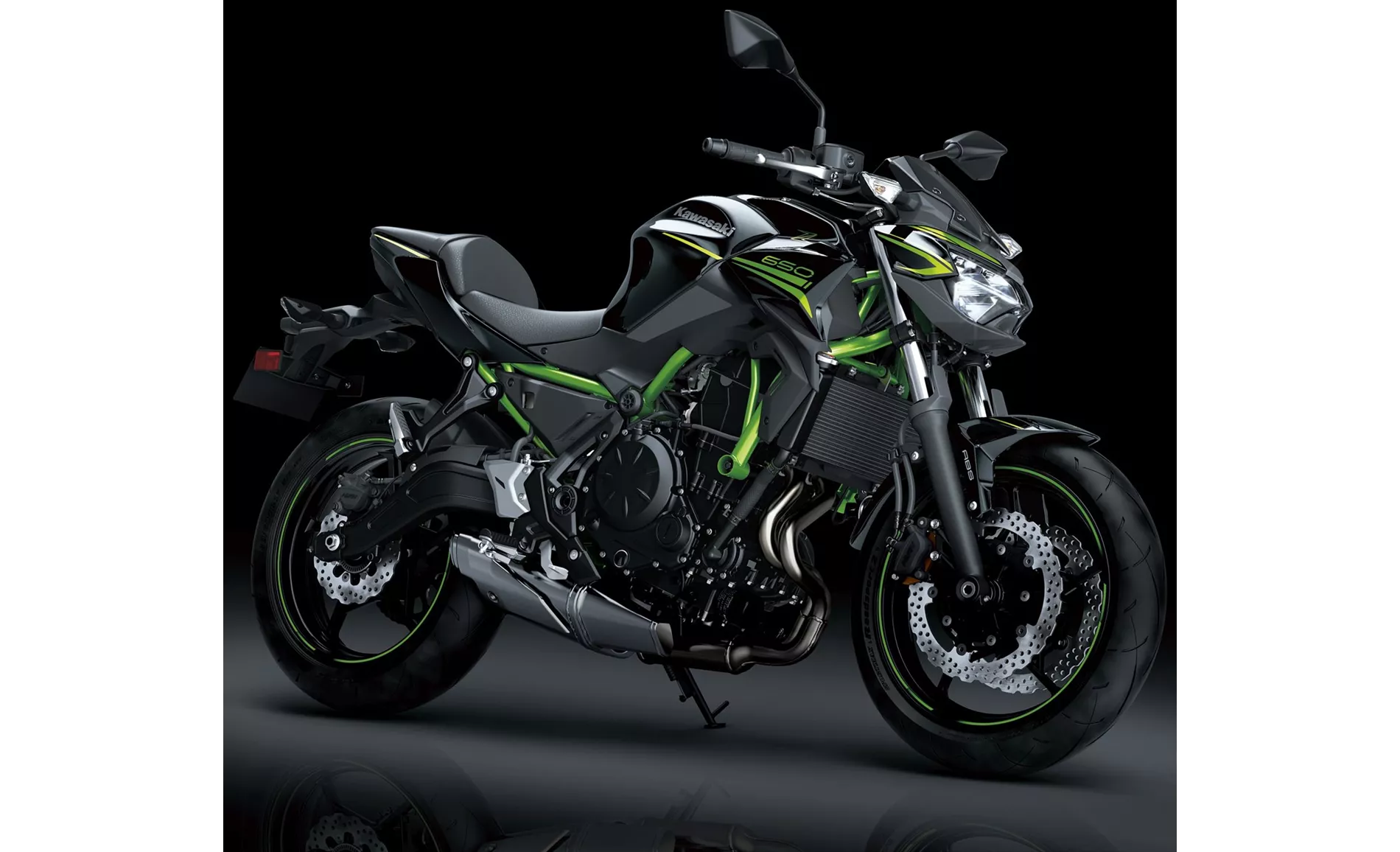
Kawasaki Z650 2020
Moving on to the Kawasaki Z650 2020, it has its own set of strengths. The bike features a powerful two-cylinder engine that delivers a thrilling ride. The aggressive intake noise adds to the overall excitement and enhances the riding experience. The compact dimensions of the bike make it easy to maneuver in tight spaces. The low seat height is beneficial for shorter riders or those who prefer a lower riding position. The stable chassis provides confidence-inspiring handling, allowing riders to push the bike to its limits. The TFT display with connectivity is a modern feature that enhances the overall riding experience. Lastly, the Kawasaki Z650 2020 has a more grown-up look, appealing to riders who prefer a more mature and sophisticated design.
However, the Kawasaki Z650 2020 does have a few weaknesses. Some riders have reported issues with the front brake pressure point, which may affect the braking performance. Taller riders may find the bike uncomfortable due to the lower seat height. Additionally, the Rideology App, which is meant to enhance the connectivity features, is not considered 100% sophisticated by some users.
In conclusion, both the Yamaha MT-07 2014 and the Kawasaki Z650 2020 have their own strengths and weaknesses. The Yamaha offers a more agile and lightweight ride, with a powerful engine and comfortable seating position. The Kawasaki, on the other hand, boasts a powerful engine, compact dimensions, and a more mature design. Ultimately, the choice between the two will depend on the rider's preferences and priorities.
Technical Specifications Yamaha MT-07 2014 compared to Kawasaki Z650 2020
Pros and Cons in comparison
Pros and Cons in comparison
Yamaha MT-07 2014

The MT-07 is an incredible fun machine that is extremely sporty to ride. The brakes pack a punch, the handling is superb and the engine is currently by far the most agile powerplant in this class - and even above.
Kawasaki Z650 2020

It's simply marvellous what Kawasaki has put together in a complete package with the new Z650. The technical components may not knock your socks off individually, but in combination they make for a pleasantly neutral motorbike that everyone will enjoy. No bitchy idiosyncrasies - simply a naked bike that works really well on winding country roads. Of course, the TFT display, which we don't find in the competition at the moment, is a plus, as is the grown-up look, which is strongly oriented towards the larger Z models. Only the pressure point of the front brake could have been more clearly defined - but you can't have everything in this price range.
Price Comparison Avarage Market Price Yamaha MT-07 vs Kawasaki Z650
There are a few key differences between a Yamaha MT-07 2014 and a Kawasaki Z650 2020. In terms of price, the actual average price of a Kawasaki Z650 2020 is about 16% higher. A Yamaha MT-07 2014 experiences a loss of 160 GBP in one year of ownership. This is offset by a loss of 30 GBP for a Kawasaki Z650 2020. Compared to Kawasaki Z650 2020 there are less Yamaha MT-07 2014 bikes available on the 1000PS.de Marketplace, specifically 17 compared to 21. It takes less time to sell a Yamaha MT-07 with 37 days compared to 80 days for a Kawasaki Z650. Since model year 2013 1000PS.de editors have written 69 reviews for the Yamaha MT-07 and 31 reviews for the Kawasaki Z650 since model year 2017. The first review for the Yamaha MT-07 was published on 04/11/2013 and now has more than 12,600 views. This compares to more than 25,000 views for the first review on Kawasaki Z650 published on 08/11/2016.

